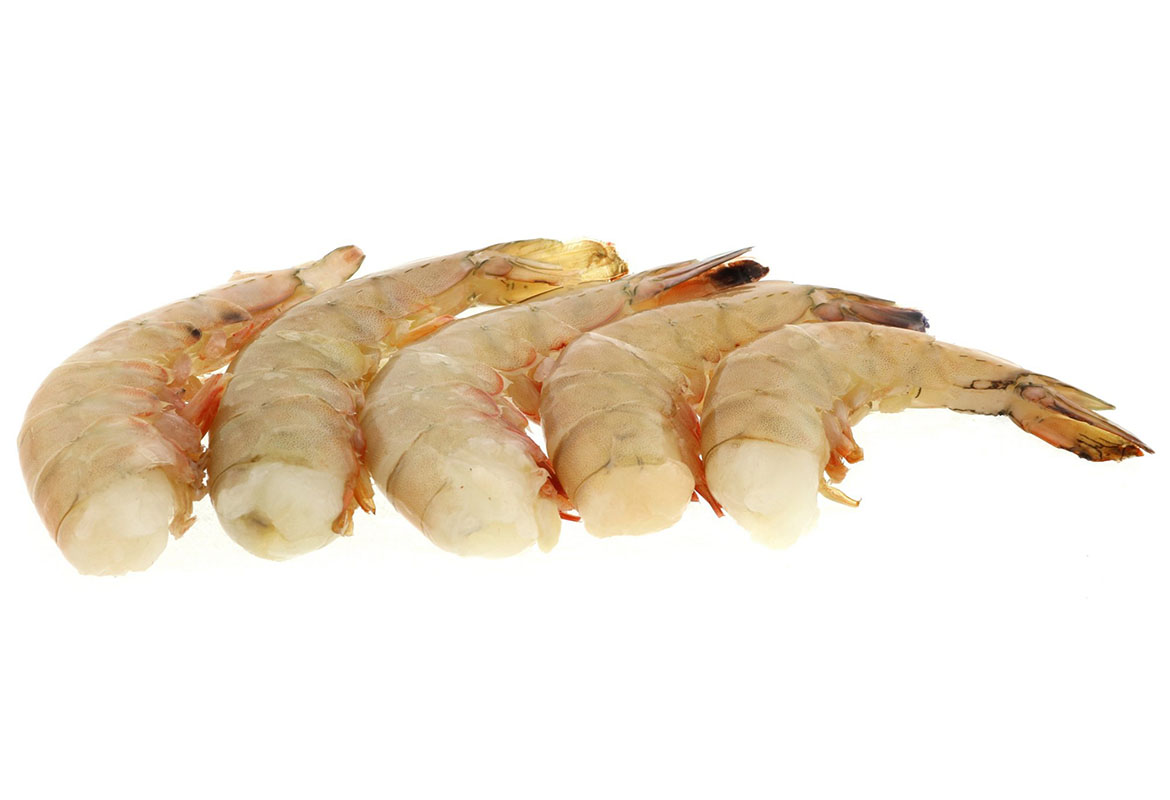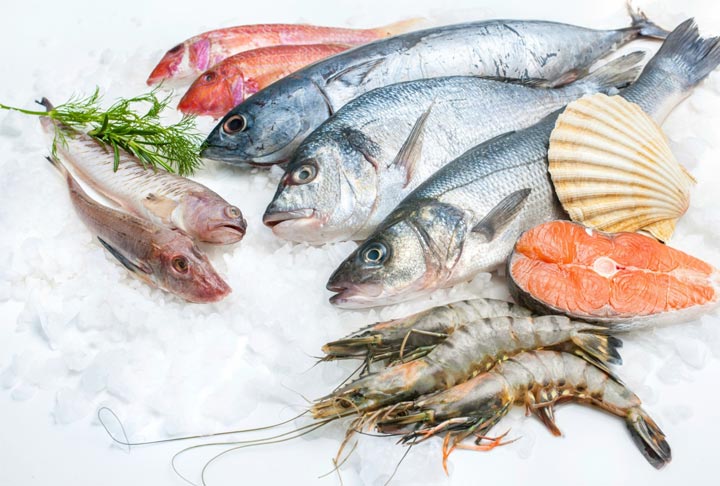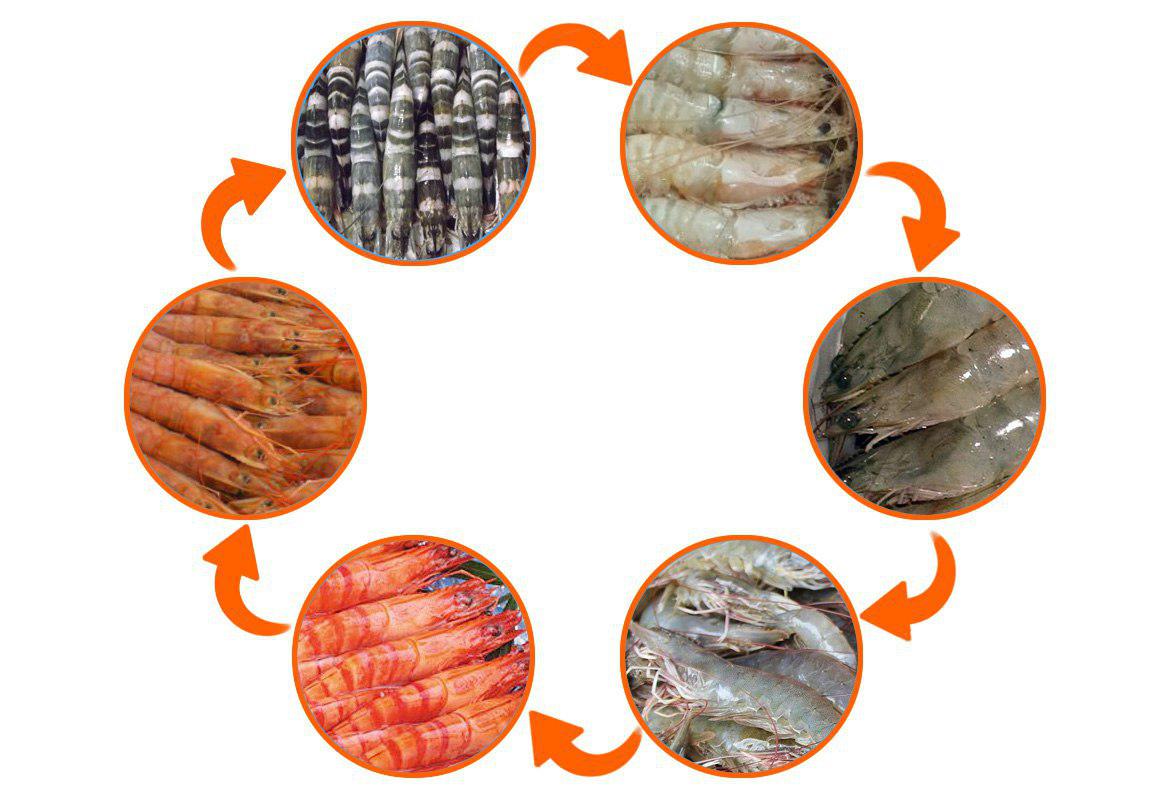- PACKING:
For shrimp is very wide and it depends on the final destination and the end user aim, if we consider the packing for retail market, then will come form small quantity arranged (finger pack in 10, 12 pieces of shrimp such as Japan retail markets) to big bulk pack. But in wholesale market there are some limited varieties of packing for Japan and European countries, standard packing are 2-kilo pack, while in U.S. Market popular packing is 5 pound.
- COUNTS:
Shrimp are variably graded in numbers per pound or per kilo and there is substantial standardization in the size grades used throughout the world. Counts expressed per pound or in kilogram predominate in trade.
Table.1 (bellow) shows counts per kilo and per pound that are customarily used for both headless and peeled shrimp. These ranges are the ones normally used in international trade. Counts expressed per pound are the most used. Most sales of shell-on shrimp are U- 10 (under-10 per pound) through 100 /120 per pound. Shell-on smaller than 100/120 is rare and very unusual.
Peeled shrimp may be graded as finished count, which means you get the number it says on the label, or as “peeled-from” count, where the label shows the size of shell-on tail from which the shrimp was peeled. The actual count in this case is about one or two sizes smaller No indication is usually given as to which of these definitions you may be getting.
Table.1 SIZE CLASSIFICATION RANGES FOR HEAD LESS AND HEAD ON AND FOR PEELED SHRIMP
|
Number of shrimp per pound (used for Head less shrimp) |
Number of shrimp per kilogram (used for Head on shrimp) |
Number of shrimp per kilogram (used for Peeled shrimp) |
|
U - 10 |
U - 10 |
U- 21 |
|
10—15 |
U – 12 |
22—33 |
|
16—20 |
U – 15 |
34—44 |
|
21—25 |
10 – 20 |
45—55 |
|
26—30 |
20- 30 |
56—66 |
|
31—35 |
30 – 40 |
67—77 |
|
36—40 |
40 – 50 |
78—88 |
|
41 —50 |
40 – 60 |
89— 110 |
|
51—60 |
50 – 60 |
111 — 132 |
|
61 —70 |
60 – 70 |
133— 154 |
|
71 —80 |
60 – 80 |
155—176 |
|
81 —90 |
70 – 90 |
177—198 |
|
91 — 100 |
80 – 100 |
199 —220 |
|
100— 130 |
70 – 110 |
221 —286 |
|
130—200 |
100- 120 |
287—440 |
|
200—300 |
120 –150 |
441 — 680 |
|
MIXED |
150 – UP |
661 — 1100 |
|
BROKEN |
BROKEN |
1100 up |
Variation of counts
Counts should be consistent, so that the shrimp in a given pack have to be similarly sized. For U.S.A. Grade Standards the count of shell-on shrimp is determined by dividing the number of shrimp in the package by the net weight of the package in pounds. Therefore a 5-pound pack of 11/15 count shrimp must contain 55 to 75 shrimp. Many processors and large users have additional requirements relating the size of the largest and smallest shrimp in a pack, in order to keep the shrimp as consistently sized as possible. The Codex standard for size grading suggests similar size grades and offers an alternative method, expressing the average count as a single figure rather than as a range. If this method is used, the largest and smallest shrimp in the pack should each be within ten percent of the size of the average stated on the label.
In some countries, even in the same country, but trough some processors you will find that sizes are sometimes described in particular words instead of figures. Table. 2 (below). This practice frequently confuses buyers, and should be avoided, because everyone has his own idea of what a ”jumbo” should be, and that idea may not be the same as the next person’s, especially if he lives in another country. Numerical counts are clearly defined and can also be checked and confirmed. Some of particular words that being used as the size are shown in Figure 7 these words used to be codified in the U.S. regulatory code. Specific approval of these descriptions has been dropped, but their use is still permitted.
Counts of broken shrimp are not defined in any standard way. Some packers may offer a 16/20 broken to indicate that the box contains shrimp that would have been 16/20 count if whole. Others will quote a wider range such as 20/30 count, indicating that actual number of pieces per pound. It is most common to grade broken. Although you will find that some processors are offering their product in more vide range, such as large, Medium and small, winch it has own interpretation by the packer.
Table.2 SIZE DESCRIPTIONS BY WORD INSTEAD OF NUMBER
|
SIZE Name |
COUNT /LB |
MINIMUM /POUND |
MAXIMUM /POUND |
|
Extra Colossal |
Under 10 |
---- |
9.9 |
|
Colossal |
10/15 |
9.9 |
15.0 |
|
Extra jumbo |
16/20 |
15.0 |
20.0 |
|
Jumbo |
21/25 |
20.0 |
25.0 |
|
Extra large |
26/30 |
25.0 |
30.0 |
|
Large |
31/35 |
30.0 |
35.0 |
|
Medium large |
36/42 |
35.0 |
42.0 |
|
Medium |
43/50 |
42.0 |
50.0 |
|
Small |
51/60 |
50.0 |
60.0 |
|
Extra small |
61/70 |
60.0 |
70.0 |
|
Tiny |
Over 70 |
70.0 |
---- |








